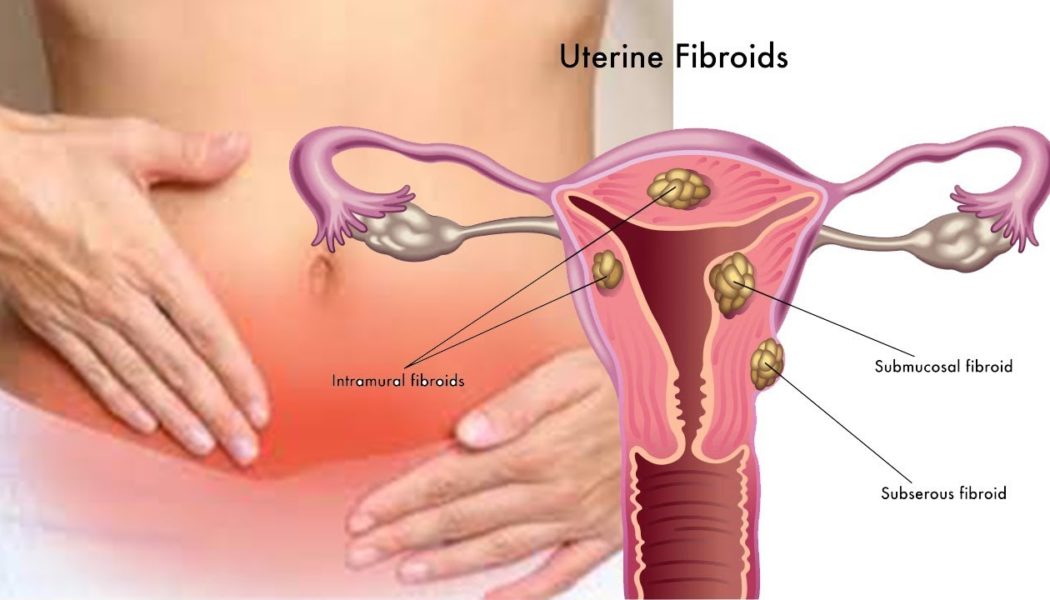Myomectomy in Munich
Search and Compare the Best Clinics and Doctors at the Lowest Prices for Myomectomy in Munich

Find the best clinics for Myomectomy in Munich
With Medijump you can browse 2 facilities offering Myomectomy procedures in Munich. The cheapest price available is $5,891 in Hildesheim. And for the cheapest price globally, prices start from $260 in Mexico.
Myomectomy in Germany
Price: $ 5,891
Myomectomy in Hildesheim
Price: $ 5,891
Mexico offers the best prices Worldwide
Price: $ 260
From 166 verified reviews
Martin xxx, 22 September 2020
Von Anfang bis Ende sehr freundliche und kompetente Mitarbeiter.
University Hospital of Munich (LMU), can be found in Professor Huber Platz, Munich, Germany and offers its patients Myomectomy procedures as well as 223 other procedures, across 26 different procedure categories. At present, there is no pricing information for Myomectomy procedures at University Hospital of Munich (LMU). The pricing information is quite specialised, so it's only available on request, and the average price is around ฿211,999. Currently, there's no information available about the doctors at the Hospital, and University Hospital of Munich (LMU) is not accredited by any recognised accreditations institutions.
WHY US?
At Medijump, we're making medical easy. You can search, compare, discuss, and book your medical all in one place. We open the door to the best medical providers worldwide, saving you time and energy along the way, and it's all for FREE, no hidden fees, and no price markups guaranteed. So what are you waiting for?

Free

Best Price

Widest Selection

Risk-Free
What you need to know about Myomectomy in Munich

Myomectomy is a surgical procedure performed to remove Uterine fibroids – abnormal growths that appear in or on a woman’s uterus. You may undergo this procedure if you have any of the following symptoms: Heavy menstrual bleeding, Menstrual periods that last longer than a week, pelvic pressure or pain, frequent urination, etc.
What does a Myomectomy Procedure Involve?
There are three types of myomectomy: abdominal myomectomy, laparoscopic myomectomy, and hysteroscopic myomectomy. All performed under general anesthetic. With abdominal myomectomy, your surgeon makes a large incision through the lower abdomen into the uterus, removes the fibroids from the uterine wall, and closes the incisions with stitches. With laparoscopic myomectomy, your surgeon makes four small incisions to insert surgical tools and a laparoscope (a thin, flexible tube with a light and a camera on one end) and cut your fibroids into small pieces. With hysteroscopic myomectomy, your surgeon inserts a thin scope through your vagina and cervix into your uterus, then shave off pieces of the fibroid using a wire loop.
How Long Should I Stay in Munich for a Myomectomy Procedure?
Unless you undergo hysteroscopic myomectomy, you will need to stay in the hospital for 1 to 3 days. Plan to stay in Munich for at least 7 days to attend follow-up checkups and also removal of the stitches.
What's the Recovery Time Like?
You will need to rest for 1 week and the recovery period depends on which type of Myomectomy you underwent: four to six weeks after abdominal myomectomy, two to four weeks after laparoscopic myomectomy, two to three days after hysteroscopic myomectomy. Wait for around six weeks until you can have sex, but you should wait three to six months before trying to get pregnant.
What sort of Aftercare is Required for Myomectomy Procedures in Munich?
After the surgery, you will have some restrictions on your diet. You will need to take care of the surgical site as it heals to limit scarring and infection. You may be advised to do some light exercises, but refrain from doing anything strenuous such as heavy lifting until you are fully recovered.
What's the Success Rate of Myomectomy Procedures in Munich?
Myomectomy is very effective and complications are very rare. However, it does have some risks and side effects you need to be aware of, including excessive blood loss, pregnancy complications, scar tissue, damage to nearby organs, and new fibroids.
Are there Alternatives to Myomectomy Procedures in Munich?
If your fibroids do not cause any symptoms or the symptoms are mild, you do not need any treatment. If you do need treatment, your alternatives to myomectomy are myolysis, uterine artery embolization, hysterectomy, and endometrial ablation.
What Should You Expect Before and After the Procedure
After a myomectomy, you will have relief from the symptoms of your uterine fibroids, such as pelvic pain and menstrual bleeding.
Whilst the information presented here has been accurately sourced and verified by a medical professional for its accuracy, it is still advised to consult with your doctor before pursuing a medical treatment at one of the listed medical providers
No Time?
Tell us what you're looking for and we'll reachout to the top clinics all at once
Enquire Now

Popular Procedures in Munich
Prices Start From $500

Prices Start From $714

Prices Start From $714

Recommended Medical Centers in Munich for Myomectomy

- Interpreter services
- Translation service
- Religious facilities
- Medical records transfer
- Medical travel insurance
- Health insurance coordination
- TV in the room
- Safe in the room
- Phone in the room
- Private rooms for patients available

- Interpreter services
- Translation service
- Religious facilities
- Medical records transfer
- Medical travel insurance
- Health insurance coordination
- TV in the room
- Safe in the room
- Phone in the room
- Private rooms for patients available

- Interpreter services
- Translation service
- Religious facilities
- Medical records transfer
- Medical travel insurance
- Health insurance coordination
- TV in the room
- Safe in the room
- Phone in the room
- Private rooms for patients available

- Interpreter services
- Translation service
- Religious facilities
- Medical records transfer
- Medical travel insurance
- Health insurance coordination
- TV in the room
- Safe in the room
- Phone in the room
- Private rooms for patients available
Myomectomy in and around Munich
About Munich
Munich is the largest city in Southern Germany and it is one of a few places on earth where traditional and modern sit side by side, with its royal palaces and high-tech cars. Known as the ‘city of art and beer,’ this city is famous for its annual beer festival known as Oktoberfest. What most people do not realize is that Munich is also one of the world’s most famous medical tourism destination. Thanks to the famous German education system that creates skilled specialists, as well as state-of-the-art medical centers that invest in the latest medical technology, medical tourism in this city is a booming business that continues to grow at a fast rate. International patients usually travel to the city for quality rather than the price.
Popular Parts of Munich
Munich boasts a beautiful historic center, amazing German food, large parks and gardens, and beer halls packed with welcoming people. Visitors can explore numerous historical buildings, such as the Church of St. Peter and Frauenkirche. These two buildings have been around for centuries and are located in Munich’s Old Town. One of the most popular attractions in the city is Alte Pinakothek, which is an important art museum that houses over 800 works from the 14th – 18th centuries from German masters. Those who want to have a picnic, hike, simply relax or even try surfing should visit the English Garden. Other popular places include Dachau Concentration Camp, Nymphenburg Palace, BMW Museum, and Deutsches Museum.
Transport in Munich
The international airport of Munich is Munich Airport, which is the second-busiest airport in Germany in terms of passenger traffic. It serves international flights from many cities around the world, including Dubai, Bangkok, and Atlanta. Munich has a comprehensive network of public transportation that will take visitors virtually anywhere around the city. The most common transit system is the U-Bahn, which is a fast and easy underground subway system. Buses, trams, and commuter trains are also available and each has a vast network. Taxis are easy to hail, reliable, and safe. However, they are a bit pricey and Uber operates in Munich.
Visas in Munich
As a member of the Schengen Area, Germany allows citizens of several countries, including Australia, New Zealand, the US, and Poland to enter and stay in the country without a visa for up to 90 days. Citizens of other countries not listed in the visa-free entry need to obtain a visa to visit the country. Always check the requirements for Germany Visa Application before applying.
Weather in Munich
From June to August is the summer, which is a popular time to enjoy outdoor activities as the temperatures hover around 24°C. On very hot days, the temperatures can reach 30°C. Autumn (September – October) and spring (March-May) has pleasant weather with mild temperatures. Winter can be very cold, with temperatures dropping as low as -10°C.
Additional Info
- Local Currency: Euro (EUR) is the official currency. 1 EUR is approx. 1.12 USD.
- Money & Payments: ATMs are easy to find. Credit cards are not widely accepted and tipping is common practice.
- Local Language: The official language is German. Many people, particularly in tourism areas, understand English to some extent.
- Local Culture and Religion: Christianity is the largest religion in the city, followed by Islam, Buddhism, Hinduism, and Judaism.
- Public Holidays: Munich celebrates numerous holidays, including New Year’s Day and Christmas Day. It also hosts several festivals throughout the year, such as Oktoberfest in October.
Popular Searches
- Plastic Surgery in Thailand
- Dental Implants in Thailand
- Hair Transplant in Thailand
- Breast Augmentation Thailand
- Gastric Sleeve in Thailand
- Gender Reassignment Surgery in Thailand
- Laser Hair Removal in Bangkok
- Botox in Bangkok
- Dermatology in Bangkok
- Breast Augmentation in Bangkok
- Coolsculpting in Bangkok
- Veneers in Turkey
- Hair Transplant in Turkey
- Rhinoplasty in Turkey
- Stem Cell Therapy in Mexico
- Rhinoplasty in Mexico
- Liposuction in Mexico
- Coolsculpting in Tijuana
- Rhinoplasty in Korea
- Scar Removal in Korea
- Gastric Sleeve in Turkey
- Bone Marrow Transplant in India
- Invisalign in Malaysia
- Plastic Surgery in the Dominican Republic
- Tummy Tuck in the Dominican Republic
- Plastic and Cosmetic Surgery in Poland
- Rhinoplasty in Poland
- Hair Implant in Poland
- Dental Implants in Poland
- IVF in Turkey

